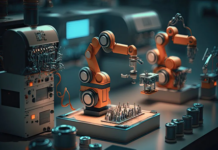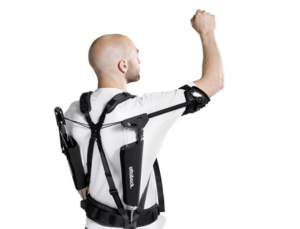
Modern medicine is promising us better lives, and one key aspect of delivering that is to make better artificial limbs available to those who need them. While transplants are an increasingly effective option for many internal organs, they are rarely an option for limbs. Prostheses are therefore needed for those who have been injured in vehicle accidents, conflicts, terrorism and other situations. The more closely the prosthesis is able to replicate the function of the missing limb, the more valuable it will be.
First, every prosthesis must provide the functionality that the wearer needs and be cost-effective, whether it is being funded by the wearer or an insurance company. Other practical considerations include the limb being lightweight for comfort and so as not to use too much power, requiring its batteries to be replaced or recharged too often. It almost goes without saying that the prosthesis must fit well, not least because otherwise it will “look artificial” and may actually be harmful rather than beneficial to the wearer. Many prostheses will be mostly hidden under clothes but some will be visible, and these should be as realistic as possible.
Combining advances in electronics and materials, modern prostheses are way ahead of those in previous generations. Advanced molding makes them as realistic and comfortable as possible while hardware ensures that the movement is smooth with a more natural appearance. The advent of 3D printing is enabling the development of custom-tailored prostheses with greater ease and at a much lower cost, making the technology more widely accessible.
Fitment
The fit is the most important element for a prosthesis, as it affects both comfort and operation. An ill-fitting prosthesis will shift and move when in use, preventing proper leverage being applied to tasks as well as potentially causing injury to the wearer. Although prostheses vary depending on their function, the features that are universally present include:
A socket or receptacle for the wearer’s remaining limb
A means of securing the prosthesis to the patient, such as a harness or straps
Mechanical linkages and motors/actuators to create and control movement
As every patient/wearer is individual, a prosthesis must be able to accommodate variations in posture and weight as well as a number of other factors. The remaining limb will also be unique to the individual, increasing the requirement for flexibility. Proper fit must be the primary consideration, as a sophisticated prosthesis that moves against the wearer uncontrollably is next to useless.
Until recently, prostheses were fitted by creating a plaster cast of the remaining limb, which was then used to create a mold for the socket or receptacle. However, the application of the plaster wrap could easily lead to a mold that was the wrong size or shape, creating fitment issues. Bringing technologies such as laser scanning, computer-aided design (CAD) and computer-assisted manufacturing (CAM) to the process has improved accuracy of the mold, and improved fitment.
With these modern processes, the accuracy is now within a millimeter, enabling far more accurate renderings. These can then be tweaked easily following a review between the patient and medical professional, allowing any pressure points to be alleviated and any looseness to be addressed. Once the data has been honed, it is transmitted to a factory where the actual socket is created to the exact dimensions.
The Hanger Clinic uses Insignia laser scanners, which have several benefits for the patient. All of the mess associated with plaster casting is disposed of and, as the technology is non-contact, patients can be scanned in comfort before the stub of the residual limb has fully healed. Once the scan is complete, it is simply reversed, so that the stub becomes a socket with a mirror image shape. This process enables a level of accuracy and detail that was simply not possible with mechanical approaches or plaster casting. A pair of inbuilt motion-tracking devices allow the scanner to account for patient movement during the scanning process, thereby ensuring high-quality data. As the scanner is small and portable, it can be transported easily outside the clinic to wherever the patient is, whether that is their home or a remotely located hospital.
Functionality
It seems simple – if it fits, it will work. Walking is just moving one foot in front of the other and then repeating, and gripping with a hand is just moving the fingers. However, things are more complex and there are many angles of articulation – a knee is required to twist, and fingers must bend and flex in several directions. Prosthetics have to mimic these motions as closely as possible to be of value to their users.
The Össur SYMBIONIC LEG 3 is a bionic prosthesis that is based around a microprocessor-controlled knee and an actively powered ankle with proactive flexion all enclosed in an integrated prosthetic unit. As the system is designed to enable users to walk without changing the way they move it provides enhanced safety and confidence when walking. This is ensured in part by inbuilt stumble recovery features and a powered toe lift, both of which reduce the likelihood of trips and falls. The prosthesis is also able to adapt to varying terrains such as grass and slopes and other uneven surfaces, reducing the risk of slipping. In tests, over 60% of people reported reduced tripping compared to previous prostheses.
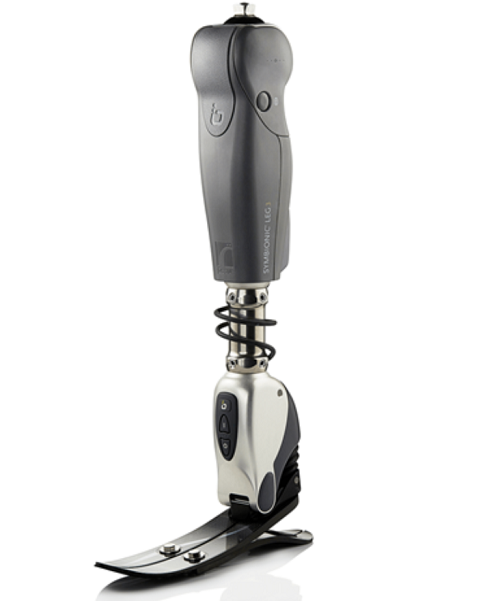
The BeBionic hand unit offers a total of 14 different grip patterns and hand positions, making it suitable for most everyday situations. Each finger has individual motors with proportional speed control that allow fingers to grip in a natural and controlled way and complete delicate tasks such as picking up a fragile polystyrene cup – or even holding an egg. At the other end of the spectrum, the BeBionic unit can handle up to 45kg and includes a novel palm design that protects it from impact damage. The weight is cleverly distributed to make the device feel lighter and grip is enhanced by wide thumbs and soft finger pads. The intelligent unit includes microprocessors that continuously monitor finger positions and can respond automatically if the item being held seems to be slipping.
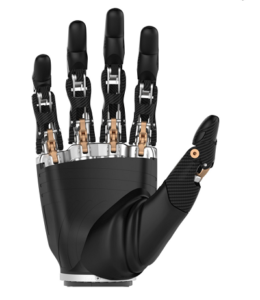
Cost Engineering
No longer do prosthetics require large corporations with deep pockets, as 3D printing has democratized the process by reducing costs. Jen Owen formed e-Nable in the US to enable anyone to create prosthetic limbs from their standard layouts. Based around a network of volunteers, e-Nable connects makers and crafters internationally to build the database of prosthesis designs that are ready for 3D printing. Formed in 2013, the organization has made donations of designs to hundreds of people globally, allowing them to avoid high costs through the resource-sharing model.
Exoskeletons Make a Difference
Alongside prosthetics, exoskeletons are experiencing something of a revolution, assisting humans in many challenging tasks. In places where physical labor is required, such as factories, building sites and warehouses, tasks like working overhead are physically tiring. In fact, in 2017, the WIdO Scientific Institute in Germany estimated that musculoskeletal problems directly contributed to around 30% of all sick days in the construction industry.
As a result, Ottobock developed the Paexo exoskeleton – this passive device weighs under 2kg and requires no energy other than that from the user. Worn close to the body, arm shells transfer weight to the hips via a system of mechanical pulls. Given the light weight and convenience, users can easily wear the device for a full working day, thereby reducing the strain in their daily tasks.
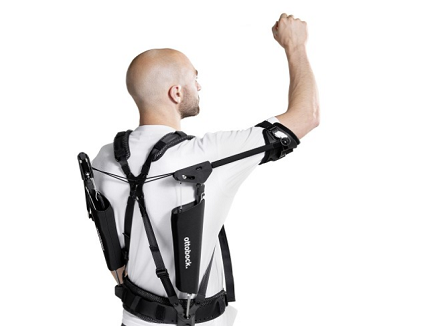
A View to the Future
Things are looking better, not only for those who have lost limbs through accident or disease but also the increasing numbers of elderly and disabled people. Technology is now able to effectively replace lost limbs or enhance the function of existing ones. Innovation in technologies such as 3D printing and sharing of open-source designs have dramatically reduced the associated costs, making modern prostheses accessible to more people than ever before.






